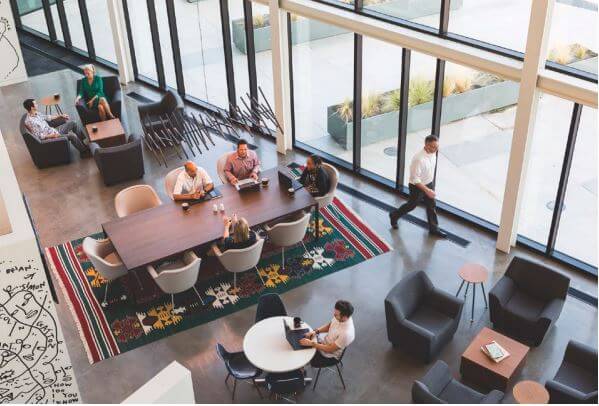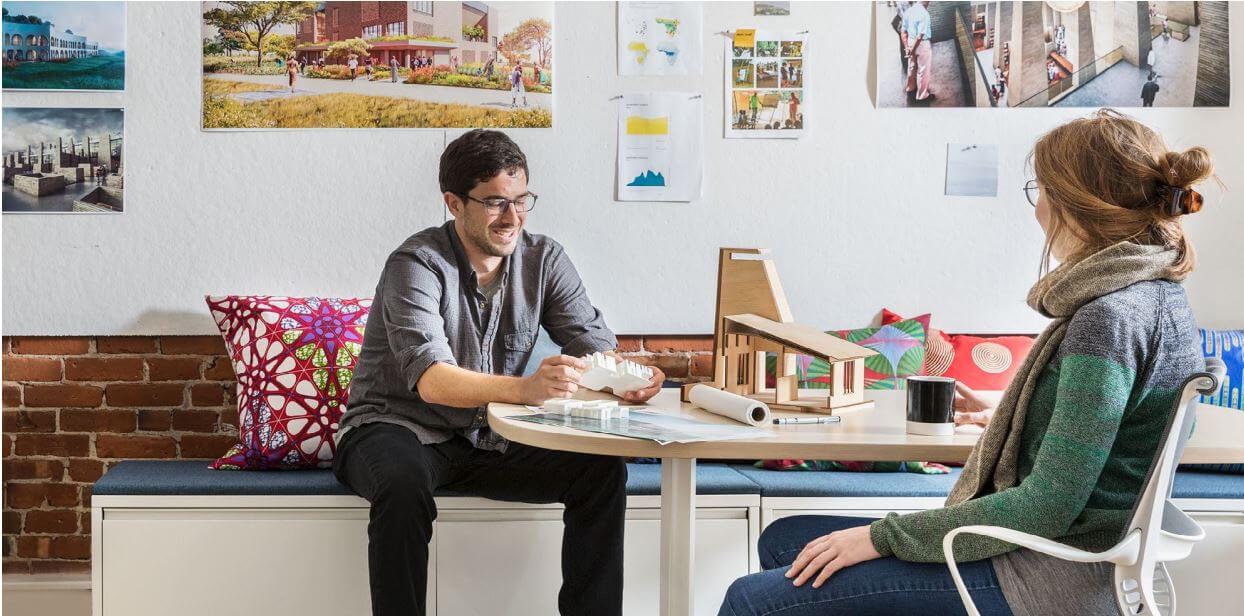Belonging at Work

Belonging at Work
Experienced as inclusion, affiliation, acceptance, and social validation, belonging is one of six fundamental human needs that motivate us at work. When a person’s need to be part of something bigger than themselves is fulfilled, they are more satisfied and perform better. This, in turn, helps organizations retain valuable employees and achieve business goals.
As part of our ongoing pursuit of human-centered workplace design, Herman Miller’s Living Office® helps organizations and their design partners create work environments where people feel connected. Proprietary studies conducted with our Living Office Research Partners indicate that successful and proactive organizations enhance belongingness by providing a variety of settings that encourage social interaction, and by carefully planning physical proximities, traffic paths, and sightlines across the landscape. Incorporating purposeful visual cues that welcome, engage, and inform a diverse employee population also promotes inclusion and esprit de corps.
Make Room for Socializing
Research has established the positive effect of face-to-face communication on team performance. Studies with our Living Office Research Partners indicate that successful organizations purposefully allocate and design space to encourage social interaction.
In addition to centralized Plaza Settings where people from all areas of the company can gather over food and drink, our Research Partners provide a variety of settings, open and enclosed, where informal interactions can take place. Placing Landing Settings with café tables and chairs outside of Meeting Spaces and locating Coves with comfortable lounge seating near work team areas encourages and supports ongoing conversations and contributes to social bonding at work.

Plan for Proximity
Studies show that physical proximity is a potent factor in creating and maintaining social connection. Our global investigation of knowledge workers found “proximity to fellow workers”—along with support for “mobility” and “collaboration” —to be a significant feature of workplaces that enhance a sense of belonging. Organizations can exploit the power of proximity by locating team members and teams based on important work relationships. Settings where anyone can touch down to work for a few hours bring together colleagues who don’t often see one another and give them an opportunity to meet up or run into each other on a regular basis. In addition, organizations can promote opportunities for helpful connection throughout the workplace by paying careful attention to lines of sight (ensuring coworkers can easily see one another) and providing furnishings that allow for convenient, spontaneous interaction.
Cue Inclusion
In today’s highly mobile and global business world, physical proximity is not always possible. Important team members may be located on the other side of the country—or the world. In the absence of shared physical context and opportunities for informal face-to-face communication, a sense of belonging deteriorates, along with cooperative and helpful behaviors. Careful planning of workplace settings used for videoconferencing can restore some of the lost benefits of face-to-face interaction. Separate monitors to display people and presentation materials allow remote participants to see what on-site viewers are looking at. Furniture arrangements that encourage participants to share a common seated or standing posture—so no one is blocking anyone’s view— prompt equal participation in discussions and provide more direct social connection for all.
Finally, an inclusive work environment plays an important role in mobile and contingent workers’ sense of belonging. For these employees, it’s important to provide a place they can call “home” when they’re in the office. Drop-in Jump Space Settings located in high-traffic areas allow those who aren’t often in the office to work alongside colleagues and bump into people they don’t often see. Smart, connected furnishings that remember and respond to individual preferences offer a sense of comfort and familiarity, even in a workplace where most workpoints are unassigned.
Plan for Prosperity
When individuals have a strong sense of belonging where they work, they are motivated to cooperate, help each other, and share in the risks and rewards of creative thinking that propels corporate profitability to new heights.

